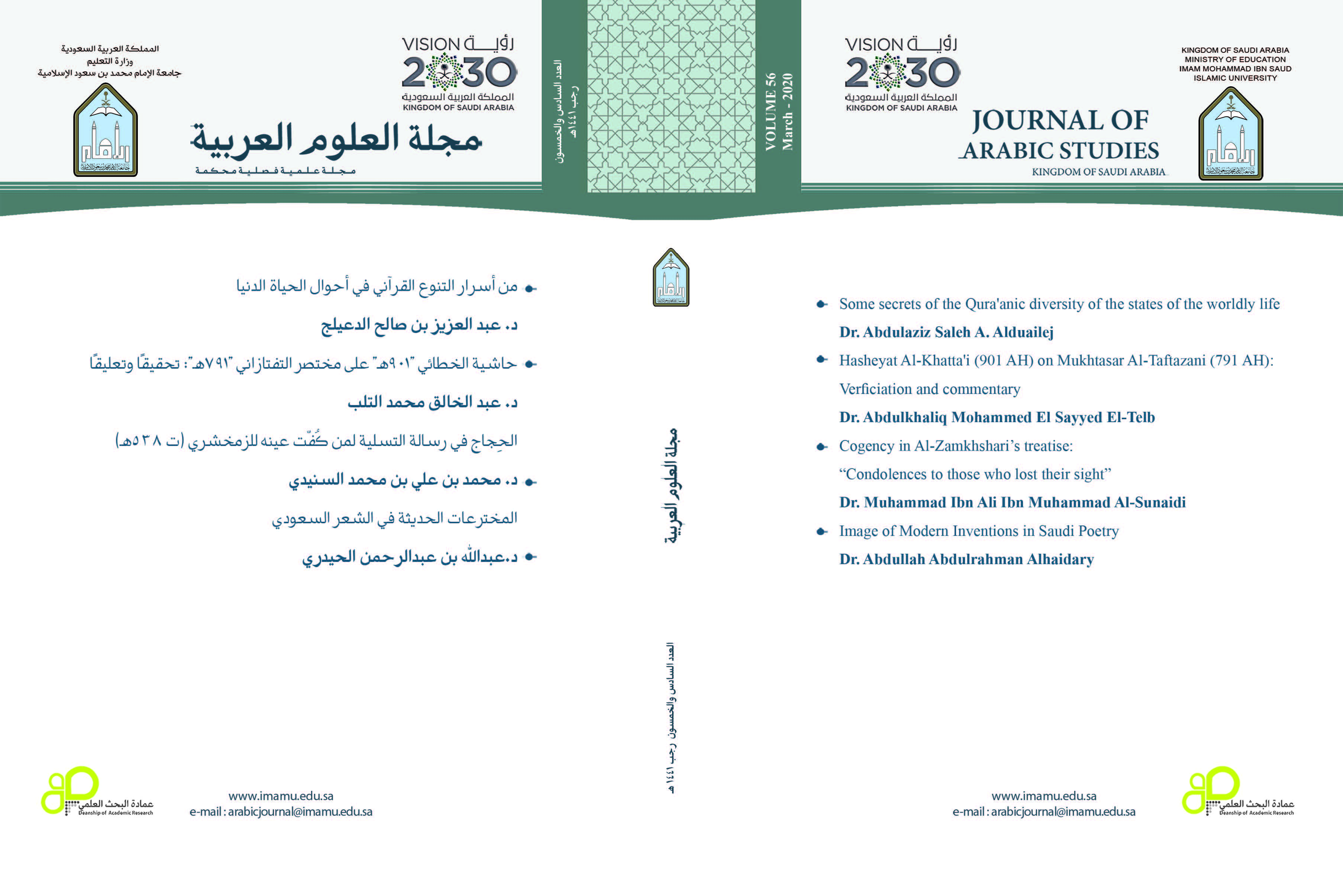Cogency in Al-Zamkhshari’s treatise: “Condolences to those who lost their sight”
Keywords:
Rhetoric, Cogency, Dialogism, Literary forms, TreatiseAbstract
This treatise belongs to Abu al-Qasim Jarallah Mahmoud Al-Khawarizim Zamakhshari (467-538), who subscribed to Mu’tazalah school of thought and Hanafi school of Fiqh and a author of some scholarly and literary works. In this treatise, the direct addressee was unknown but the rhetorical force of the treatise was maintained for those who are concerned with rhetoric. The treatise had two titles, but the most likely one is (a treatise of condolences to those who lost their sight). The writer also indicated the form of the treatise and its type. The treatise was also arranged in a series of cogency forms, such as the overriding argument, which draws to the desired compensation of loss of sight and this argument was clearly mirrored at the beginning and the end of the treatise. Then follows the argument of compensation in which the sender built it on the loss of sight and obtaining insights instead. Then comes the argument of communion for one’s defect: effectiveness, teleological, physical and visual. After that comes the argument of informing. The author argued that insight is better than sight, noting that one is judged by his heart. The argument of tendencies shows that sighted persons may see prohibited and offensive things. Finally comes the argument of role models by mentioning some examples of the blind among the early Muslims (Salaf). The bases of the treatise can be divided into dialogue and anagrams. In the treatise, there are features of speech anagrams, namely rhetorical docility. The treatise was constructed on maximizing the role of insight, considering it as a kind of invocation such as poetic docility in the case of imagination of ugly faces and also including the fallacy of the fallacies in the position of lexical figurative language. However, it will be considered commendable is it involves memorization of words, the virtue of the speaker and testing the addressee. In the treatise, there are many voices: a subconscious voice of oneself, an ideal voice of the philosophical other, and a literary sub-voice, which is the dominant voice




